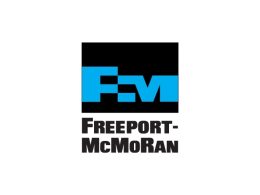Why Commodity Trading Advisors Deserve a Prominent Seat at the Alternatives Table
In an investment climate increasingly shaped by volatility, dispersion, and the relentless hunt for uncorrelated returns, Commodity Trading Advisors—or CTAs—are no longer the exotic creatures they once were. They have become central figures in the broader alternative investment landscape, offering institutional and retail investors alike exposure to sophisticated strategies once reserved for a select few. But what exactly are CTAs, and why are they so critical to conversations around diversification, risk mitigation, and capital efficiency?
As part of our continuing exploration of modern portfolio construction and the evolution of liquid alternatives, let’s take a comprehensive look at CTAs—what they do, how they’re structured, and why they matter—with insights drawn directly from the academic and professional literature, including a detailed exposition by Zsolt Berenyi of RISC Consulting.
Professional Money Managers at the Edge of Complexity
Commodity Trading Advisors (CTAs) are professional money managers—firms or individuals—that offer advice and active services, like derivatives trading or running managed futures accounts, to, and on behalf of, their clients. That simple sentence opens the door to a universe of complexity. Unlike passive investment vehicles, CTAs are active managers—tactical, dynamic, and intensely data-driven.
Crucially, their activity in U.S. markets is governed by formal oversight: this kind of activity on the U.S. markets requires a registration with the U.S. Commodity Futures Trading Commission (Summa, 2005). This regulatory framework lends the space credibility and structure, distinguishing CTAs from other loosely regulated or opaque vehicles.
From “Commodities” to a Universe of Derivatives
Though the name implies a narrow focus, CTAs have evolved far beyond their commodity-trading roots. As Berenyi writes, in the early years, CTA’s trading was indeed limited to commodities (hence the name CTA)—however, with the introduction of derivatives on a series of financial and other products, their investment scope widened considerably.
Today, commodity funds that are managed by CTAs count to the modern alternative investments. That designation is essential. CTAs—and the “managed futures” programs they run—are now classified as public alternative investment vehicles, and they may invest in forwards, futures, options, and other derivative contracts on a wide range of assets: physical commodities (precious and non-precious metals, agricultural products like grains, soft commodities, etc.), and financial instruments (equity indices, foreign currency, and fixed income products).
That breadth enables exposure not just to commodities, but to the underlying trends that shape global macroeconomics. It’s no accident that managed futures programs often serve as diversifiers during equity bear markets and inflationary shocks.
Strategy, Structure, and Style
The CTAs of today are defined less by the assets they trade and more by the way they trade them. Nowadays, CTA trading programs are characterized by the market strategy (which can be either trend-followers or market neutral) as well as the market segment (agricultural, currency, financial, metals, stock index, or diversified).
This dual-axis classification—by strategy and by asset class—highlights the flexibility of CTAs. They can run highly directional, momentum-based portfolios (trend-followers), or focus on exploiting relative mispricings without taking broad market risk (market neutral). They can also be hyper-specialized or broadly diversified across asset classes and geographies.
The payoff? Often a non-linear, asymmetric return profile. It is worth noting that such funds often keep highly leveraged positions through borrowing or the use of economic leverage through derivative assets, thus generating fairly non-normal return profiles (Kat, 2004).
In other words, CTAs can deliver convexity. When traditional portfolios buckle under pressure, CTAs can zig while others zag—a vital trait in an era of regime shifts and market fragility.
CTAs vs. Hedge Funds: Transparency as Differentiator
It’s tempting to lump CTAs into the broader bucket of hedge funds—and there’s certainly overlap in terms of asset classes and strategies. As Berenyi explains, CTAs are, to a certain extent, similar to hedge funds. CTAs and hedge funds might both invest in similar assets and employ comparable strategies.
But here’s where the distinction becomes vital: the main distinction between CTAs and hedge funds lies, however, not in the strategies CTAs follow but is a more structural one: while investors keeping a managed account are able to follow all the trading that takes place on their behalf on a regular basis, hedge funds still remain an opaque investment form in this respect (Edwards and Liew, 1999).
Transparency, then, is a critical advantage. In a world where allocators increasingly demand visibility, auditability, and control over their capital, the structure of CTAs—particularly in managed account form—offers a compelling alternative to the black-box mystique of traditional hedge funds.
Liquid, Regulated, and Ready for Prime Time
The implications for asset allocators are clear. CTAs offer:
- Global Multi-Asset Exposure: through derivatives on commodities, currencies, bonds, and equity indices.
- Flexible Strategy Implementation: including trend, carry, relative value, and volatility-based approaches.
- Non-Correlated Returns: particularly valuable in periods of equity stress or inflationary regimes.
- High Transparency and Liquidity: via separately managed accounts and public fund structures.
- Regulatory Oversight: ensuring professional standards through CFTC registration.
Together, these features position CTAs as more than just niche players—they are core tools in the modern asset allocator’s toolkit.
The Bottom Line
In the evolving taxonomy of alternative investments, CTAs represent one of the most dynamic and structurally sound categories available to both institutional and retail investors. As liquid, regulated vehicles capable of navigating both commodity and financial markets across multiple strategies, CTAs occupy a unique space that combines the tactical agility of hedge funds with the transparency and oversight of traditional investment funds.
As we continue to reimagine diversification in a multi-polar, inflation-tinged world, one thing is certain: CTAs aren’t just an option—they’re increasingly a necessity.
REFERENCES
Edwards, F. R. and Liew, J. (1999) Hedge funds versus managed futures as asset classes. Journal of Derivatives, 6, 45–64.
Gregoriou, G. N., Hübner, G., Papageorgiou, N., and Rouah, F. (2005) Survival of commodity trading advisors: 1990–2003. Journal of Futures Markets, 25, 795–816.
Kat, H. M. (2004) Managed futures and hedge funds: a match made in heaven. In: G. N. Gregoriou, V. Karavas, F. S. Lhabitant, and F. Rouah (eds.),
Commodity Trading Advisors: Risk Performance Analysis and Selection. Wiley, Hoboken, NJ. Potter, M., Schneeweiss, T., and Spurgin, R. (1996)
Managed futures and hedge fund investment for downside equity risk management. Derivatives Quarterly, 3, 62–72. Summa, J. (2005)
A primer on managed futures, http://www.investopedia.com/articles/optioninvestor/05/070605.asp














